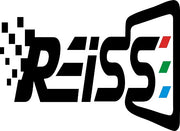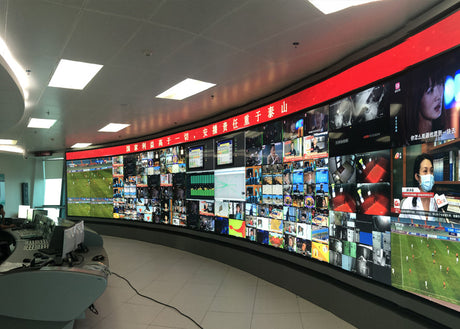How to install LED display easily?
LED display screens have become the best choice for efficient, high-definition information display in various modern places in the international market, and are widely used. Here are practical industry tips for easy LED display installation:
- Preparation and inspection:Fully prepare the required tools and materials, including LED display module, control systems, power cords, connecting wires, cables, screwdrivers, etc. Check the installation site to ensure that the wall, floor or bracket structure is flat and stable, and the installation space can fully accommodate the size, space and weight of the LED display
- Design the layout to determine location markers:According to the needs and site conditions, design the optimal installation layout of the LED display, measure and mark the exact position of the LED display module,the power supplyand control system on the installation bracket to ensure the accuracy and consistency of the installation
- Fixed connections for power supply and control systems:According to the parameter characteristics and installation layout of the LED display module, fix the power supply and control system on the installation bracket according to specifications, and connect the power cord and data cable to ensure stable power supply and data transmission
- Install LED display module:The LED display modules are connected and fixed on the mounting bracket according to their interfaces and fixing methods. The modules are precisely spliced to ensure that the alignment and connection between the modules are firm and reliable. At the same time, connect the power supply according to the requirements of the control system. Wires and data lines, and conduct necessary testing and debugging to ensure that the LED display is working properly
-
Adjustment and calibration:After the installation is completed, the LED display control system is used to adjust and calibrate parameters such as brightness, color, color temperature, and contrast according to the specific ambient light to optimize image and video playback to ensure clear and accurate content

How to choose an LED display suitable for appearance design?
When choosing an LED display, in addition to important factors such as technical parameters and performance, here is how to choose an LED display that is suitable for appearance design:
- Consider application scenarios:When choosing a design, make sure it fits your application scenario. Indoor scenes usually pay more attention to detail and refinement, while outdoor scenes require a more durable and dust-proof and waterproof design
- Determine size and shape:Depending on your needs and installation space, you can choose common rectangles and squares, or customize unconventional shapes such as arcs and circles according to special needs to ensure that the size and shape of the LED display is suitable for the application scenario
- Consider materials and colors:Common materials include aluminum alloy, steel and plastic, each of which has its own unique characteristics and appearance style. Choose durable, lightweight materials that can maintain a stable appearance over a long period of use. Choosing the right color can enhance recognition and appeal
-
Consider border and edge design:Carefully considering the width, shape, and color of your borders will affect the aesthetics of the overall look. Choosing the appropriate frame design can make the LED display more fashionable and refined, and coordinate with the surrounding environment and decoration

Why can LED display present high-definition, vivid and lifelike images?
How does the LED display screen present high-definition, vivid and lifelike images? Let us reveal the technical secrets behind LED display:
- High pixel density:The more pixels the LED display has, the higher the pixel density, which can present more detailed and realistic images.
- Ultra-wide viewing angle technology:The ultra-wide viewing angle technology used in LED displays keeps images sharp, colorful and provides consistent quality and effects
- High contrast and brightness:LED display backlight technology adjusts high contrast to make the light and dark parts of the image clearer and more distinct, enhancing the three-dimensional and layered feel of the image. Dimming control and high brightness ensure images are clearly visible in a variety of environments and are not affected by light
- Accurate color reproduction capabilities:The LED display uses advanced color management technology and color correction algorithms to accurately restore every color detail in the image, making the image colorful and consistent. Whether it is bright red, emerald green, or dark blue, it can restore true and full colors, making the image more vivid and lifelike
-
Smooth dynamic effects at high refresh rates:A high refresh rate can refresh images more times, reduce image afterimages and flickering, and keep images smooth and smooth when moving or changing quickly. The high refresh rate LED display can present delicate, smooth and coherent dynamic images

How to choose the best LED display box structure to optimize performance?
Choosing the best LED display cabinet structure has become a key factor in the LED display market. The following is a detailed analysis of the actual selection points of the LED display box structure:
- Sturdy aluminum alloy box:Aluminum alloy is a commonly used box material, It has the characteristics of light weight, high strength and corrosion resistance. The box structure ensures the working stability and durability of the LED display, effectively protects the internal structure, makes installation and maintenance more convenient, and improves reliability and service life
- Quick release design:The LED display box has a convenient disassembly and assembly function, which can quickly adjust and replace parts, improve maintenance efficiency, greatly reduce downtime, and ensure that the LED display always operates efficiently
- Modular design:The modular structure allows each part to operate independently and be flexibly combined to facilitate maintenance and upgrades. It can also be expanded or replaced, providing greater flexibility and sustainability. Choose a modularly designed LED displaybox with more customization options to meet the needs of different scenarios
- Excellent cooling and ventilation system:Choosing a box structure with excellent heat dissipation and ventilation design can effectively reduce the temperature, maintain the stable working condition of the LED display, extend the service life of the LED lamp beads, and make the LED display durable and efficient
-
Dustproof and waterproof design:The dustproof and waterproof box structure can protect the internal components of the display from dust, rain and moisture, ensuring the stable, continuous display operation and long-term reliability of the LED display under various harsh conditions

How to achieve seamless splicing of LED displays and perfect continuous presentation of images?
Regardless of the size of the LED display, images are presented smoothly and continuously across the entire screen without any interruptions or gaps. The key to this technology lies in several aspects:
- Precise module alignment and splicing processing:Advanced and precise calibration technology is used to ensure that the pixel position and color of each display module are consistent. Precise alignment makes transitions between multiple modules seamless and eliminates image interruptions
- Processing chips and algorithms:Advanced processing chips and algorithms can adjust image data in real time, eliminate mismatch and chromatic aberration at splicing points, and ensure the coherence and authenticity of the entire screen image
-
Viewing angle optimization: The seamless splicing of the LED display keeps the viewing angle consistent, and the image always maintains the same quality and clarity no matter which angle it is viewed from. This optimization ensures seamless fluidity across the entire screen

Why does the LED display automatically and intelligently adjust the brightness under different ambient lights?
The LED display screen will automatically and intelligently adjust the brightness under different ambient lights to ensure that the content is visible, clear and effective. The principle is:
- Light sensor technology:The automatic brightness adjustment of the LED display is achieved through light sensor technology
- Intelligent control system:The control system of the LED display screen analyzes the intensity of ambient light in real time based on the feedback signal from the light sensor, and intelligently adjusts the real-time brightness level based on the built-in algorithm and logic
-
Adaptive performance:The automatic brightness adjustment of the LED display has powerful adaptive performance

How to choose environmentally friendly materials and recyclable solutions for LED display?
LED displays that choose environmentally friendly materials and recyclable solutions have become a hot spot in the market.The following provides professional knowledge to help you make environmentally smart choices
- Environmentally friendly material selection:High-quality LED displays use mercury-free, lead-free LED chips and environmentally friendly circuit boards to reduce environmental risks
- Recyclable solutions:The LED display screen adopts a detachable and recyclable design to effectively recycle and dispose of waste products, reduce electronic waste, and promote a circular economy
- Environmental certifications and standards:RoHS (Restriction of the Use of Certain Hazardous Substances Directive) and WEEE (Waste Electrical and Electronic Equipment Directive) are international certification bodies that have clear requirements for the environmental performance of electronic products
-
Sustainable innovation:LED display are powered by renewable energy, use degradable materials, optimize energy efficiency, etc., and develop more environmentally friendly materials and technologies

How to customize the size and shape of LED display design to meet special needs?
How to customize the size and shape of the design to meet special needs is an important consideration when choosing an LED display. Here's what's tailor-made for you:
- Analysis of size and shape requirements:Clarify the required LED display size, bending, curved or non-traditional shape requirements, usage, installation environment and expected effects
- Technical feasibility assessment:Evaluate the technical requirements and limitations of the desired LED display in terms of pixel density, resolution, module size and connectivity to ensure that the custom design is technically feasible
- Develop a personalized design plan:According to the size and shape requirements and technical feasibility, choose arc, curved, transparent or non-standard, realize special-shaped LED display through multi-module splicing, and formulate a personalized design plan
- Quality and reliability guaranteed:Customized products select high-quality LED chips, circuit boards and structural materials, and conduct strict quality control and testing to ensure product reliability and stability
-
Professional technical support and after-sales service:Regardless of installation, maintenance, after-sales or other needs, choose professional technical support and complete after-sales service











